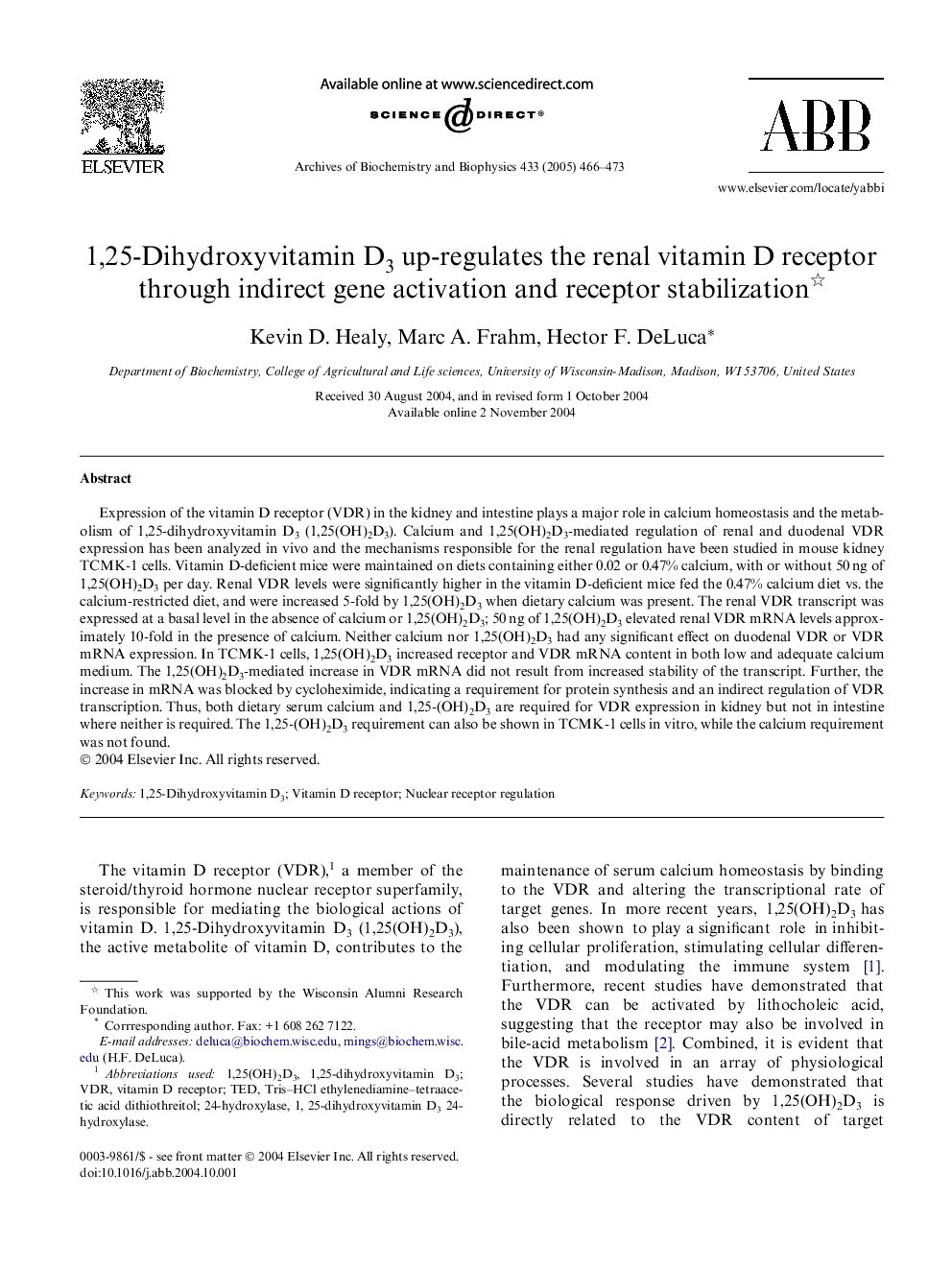| Article ID | Journal | Published Year | Pages | File Type |
|---|---|---|---|---|
| 9882384 | Archives of Biochemistry and Biophysics | 2005 | 8 Pages |
Abstract
Expression of the vitamin D receptor (VDR) in the kidney and intestine plays a major role in calcium homeostasis and the metabolism of 1,25-dihydroxyvitamin D3 (1,25(OH)2D3). Calcium and 1,25(OH)2D3-mediated regulation of renal and duodenal VDR expression has been analyzed in vivo and the mechanisms responsible for the renal regulation have been studied in mouse kidney TCMK-1 cells. Vitamin D-deficient mice were maintained on diets containing either 0.02 or 0.47% calcium, with or without 50Â ng of 1,25(OH)2D3 per day. Renal VDR levels were significantly higher in the vitamin D-deficient mice fed the 0.47% calcium diet vs. the calcium-restricted diet, and were increased 5-fold by 1,25(OH)2D3 when dietary calcium was present. The renal VDR transcript was expressed at a basal level in the absence of calcium or 1,25(OH)2D3; 50Â ng of 1,25(OH)2D3 elevated renal VDR mRNA levels approximately 10-fold in the presence of calcium. Neither calcium nor 1,25(OH)2D3 had any significant effect on duodenal VDR or VDR mRNA expression. In TCMK-1 cells, 1,25(OH)2D3 increased receptor and VDR mRNA content in both low and adequate calcium medium. The 1,25(OH)2D3-mediated increase in VDR mRNA did not result from increased stability of the transcript. Further, the increase in mRNA was blocked by cycloheximide, indicating a requirement for protein synthesis and an indirect regulation of VDR transcription. Thus, both dietary serum calcium and 1,25-(OH)2D3 are required for VDR expression in kidney but not in intestine where neither is required. The 1,25-(OH)2D3 requirement can also be shown in TCMK-1 cells in vitro, while the calcium requirement was not found.
Related Topics
Life Sciences
Biochemistry, Genetics and Molecular Biology
Biochemistry
Authors
Kevin D. Healy, Marc A. Frahm, Hector F. DeLuca,
